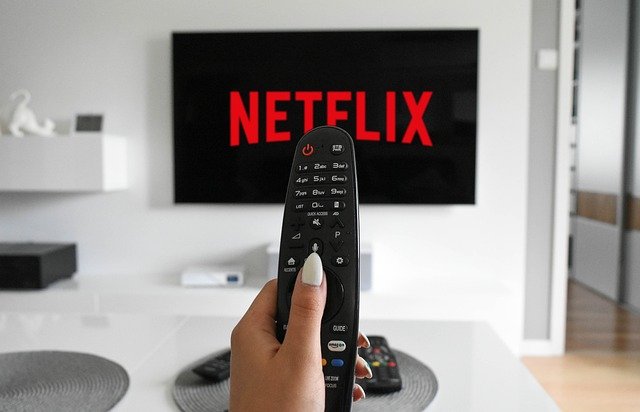Smart TV Technology: A Guide to Modern Features and Choices
Smart TVs have transformed how we consume entertainment, offering streaming services, voice control, and app integration in one device. With rapid advancements in display technology and features, choosing the right television requires understanding key differences in screen types, connectivity options, and emerging innovations that will shape viewing experiences in the coming years.

OLED vs QLED: What’s the Real Difference?
When shopping for a premium television, the choice between OLED and QLED displays often creates confusion. OLED, or Organic Light-Emitting Diode technology, produces light at the pixel level, allowing each pixel to turn completely off for true blacks and infinite contrast ratios. This results in exceptional picture quality, particularly in dark scenes, and wider viewing angles. QLED, which stands for Quantum Dot LED, uses a traditional LED backlight enhanced by quantum dot technology to produce brighter images and more vibrant colors. Samsung pioneered QLED technology, while LG has dominated the OLED market.
The practical differences matter for specific viewing environments. OLED excels in darker rooms where contrast and black levels create cinematic experiences, making it ideal for movie enthusiasts. QLED performs better in bright rooms, delivering higher peak brightness that combats glare from windows or lamps. Price differences exist, with OLED typically commanding premium prices due to manufacturing complexity, though the gap has narrowed. Lifespan considerations also factor in, as OLED panels may experience burn-in with static images over extended periods, while QLED displays avoid this issue entirely. Both technologies deliver 4K resolution and support HDR formats, but your room lighting and content preferences should guide the decision.
TV Buying Guide for Modern Households
Navigating the television market requires understanding several key specifications beyond screen technology. Screen size should match viewing distance, with a general rule suggesting sitting 1.5 to 2.5 times the diagonal screen measurement away from the display. For a 55-inch television, optimal viewing distance ranges from 7 to 11 feet. Resolution matters less than it once did, as most modern televisions offer 4K as standard, though 8K models exist at significantly higher price points with limited content availability.
Refresh rate impacts motion clarity, particularly for sports and gaming. A 120Hz refresh rate provides smoother motion than the standard 60Hz, reducing blur during fast action sequences. Smart platform selection affects daily usability, with Roku, Google TV, Amazon Fire TV, and proprietary systems like Samsung’s Tizen or LG’s webOS offering different app selections and interface designs. Connectivity options should include multiple HDMI 2.1 ports for gaming consoles and external devices, along with eARC support for advanced audio systems. Voice assistant integration with Alexa, Google Assistant, or Apple HomeKit adds convenience for smart home users.
| Screen Size | Typical Price Range | Best For | Key Features |
|---|---|---|---|
| 43-50 inches | $250-$600 | Bedrooms, small spaces | Basic smart features, 4K resolution |
| 55-65 inches | $400-$1,200 | Living rooms, families | Advanced HDR, better processors |
| 70-75 inches | $800-$2,000 | Large rooms, home theaters | Premium picture quality, gaming features |
| 77+ inches | $1,800-$5,000+ | Dedicated theaters, luxury spaces | OLED/QLED technology, 8K options |
Prices, rates, or cost estimates mentioned in this article are based on the latest available information but may change over time. Independent research is advised before making financial decisions.
What Changes in Smart TV Tech to Expect in 2025
The television industry continues evolving with several emerging technologies poised to reshape viewing experiences. MicroLED displays represent the next generation beyond OLED, offering similar per-pixel lighting control without organic materials that degrade over time. While currently limited to extremely expensive models, manufacturing improvements may bring MicroLED to consumer price points within coming years. Mini-LED backlighting already bridges the gap, providing QLED televisions with thousands of dimming zones for improved contrast that approaches OLED performance.
Artificial intelligence integration will enhance picture processing, with AI upscaling improving lower-resolution content to near-4K quality and automatically adjusting settings based on content type. Cloud gaming services will reduce the need for dedicated gaming hardware, with televisions optimized for low-latency streaming from services like Xbox Cloud Gaming and NVIDIA GeForce Now. Ambient computing features will transform televisions into smart home hubs, displaying security camera feeds, controlling connected devices, and providing information at a glance when not actively streaming content.
Wireless connectivity improvements will eliminate cable clutter, with WiSA technology enabling wireless speaker connections and potentially wireless video transmission from source devices. Energy efficiency standards continue tightening, pushing manufacturers toward more sustainable technologies that reduce power consumption without sacrificing performance. These advancements will make televisions more versatile household devices rather than single-purpose entertainment screens.
Conclusion
Selecting a smart television involves balancing display technology, size requirements, feature sets, and budget constraints. Understanding the fundamental differences between OLED and QLED helps match technology to viewing environments, while considering refresh rates, smart platforms, and connectivity ensures long-term satisfaction. As the industry moves toward innovations like MicroLED, enhanced AI processing, and deeper smart home integration, current models still offer excellent value with mature technologies. Prioritizing features that match actual usage patterns over specifications alone leads to better purchasing decisions and years of enjoyable viewing experiences.




